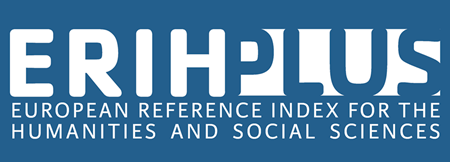TERM SEMANTIC STRUCTURE: CORE, INTERCONNECTIONS, POTENTIAL
DOI:
https://doi.org/10.32782/folium/2025.7.1Keywords:
semantic opposition, semantic structure, semantic feature, term, concept.Abstract
The proposed study examines the semantic structure of a word-term, analyzes the properties and the semantic core structure, as well as the relationships between components within these complicated complexes. The research has been conducted using a synthesis of synchronous and diachronic aspects of word development. A word-term semantic core is a complicated multi-layered structure that has complexes of explicit and implicit parameters and characteristics. The levels of semantic structure, their properties, and characteristics have been investigated. The directions and nature of the interaction of categorical, integral, differential semantic features, and concept features have been analyzed. One of the characteristic properties of the semantic core is the hierarchical and branched nature of its structure, which implies the presence of a non-discrete figurative level at its core. The interaction of semantic features-concepts in the synthesis of entire implicit and explicit complexes, and the degree of their actualization in different senses in different semantic fields, have also been investigated. The semantic core acquires properties of the invariant model, which is an entire semantic complex. Various types of semantic transitions and their inherent sequences of actualization of concept complexes are considered in the lexeme structure development process. The conceptualfigurative component is of decisive importance in the process of formation and development of both the structure of the semantic core and the lexeme structure. The fusion of conceptual images in the word-term semantic core occurs due to the nonlinear nature of both the conceptual images themselves and the structure of the semantic core. Metaphorical and metonymic processes of different levels have been identified and analyzed both in the structure of the semantic core itself and at different stages of the functioning of this structure during the formation of new meanings in various terminological fields and domains. Variants of gradation of the connotative semantic features saturation degrees in the structure of a lexeme and the role of the semantic core in these processes have been considered. The study has involved an analysis of the word-term functioning in various types of professional and interdisciplinary discourse.
References
Baldinger, K. (1980). Semantic Theory. Тоwards a Modern Semantics. New York.
Bazin, G. (1986). Histoire de l`histoire de l`art: de Vasari à nos jours. Paris: Albin Michel.
Bybee, J. (2010). Language, Usage and Cognition. Cambridge: Cambridge University Press.
Collins English Dictionary. (2006). New York. URL: https://www.abbyy.com/en-ee/translation_dictionary
Condamines, A., & Rebeyrolle, J. (2001). Searching for and identifying conceptual relationships via a corpus-based approach to a Terminological Knowledge Base (CTKB). Natural Language Processing. Recent Advances in Computational Terminology, 127–148.
Gombrich, E. H. (2006). The Story of Art. London,Oxford, New York: Phaidon Publishers Inc.
Lakoff, G., & Johnsen, M. (2003). Metaphors we live by. London.
Lyons, J. (1977). Semantics (Vols 1–2). Cambridge, England.
Panofsky, E. (2005). The Life and Art of Albrecht Durer. Princeton University Press.
Skeat, W.W. (1991). An Etymological Dictionary of the English Language. Oxford.
Staab, S., & Studer, R. (2004). Handbook on ontologies. Berlin.
Downloads
Published
How to Cite
Issue
Section
License
Copyright (c) 2025 Folium

This work is licensed under a Creative Commons Attribution 4.0 International License.











